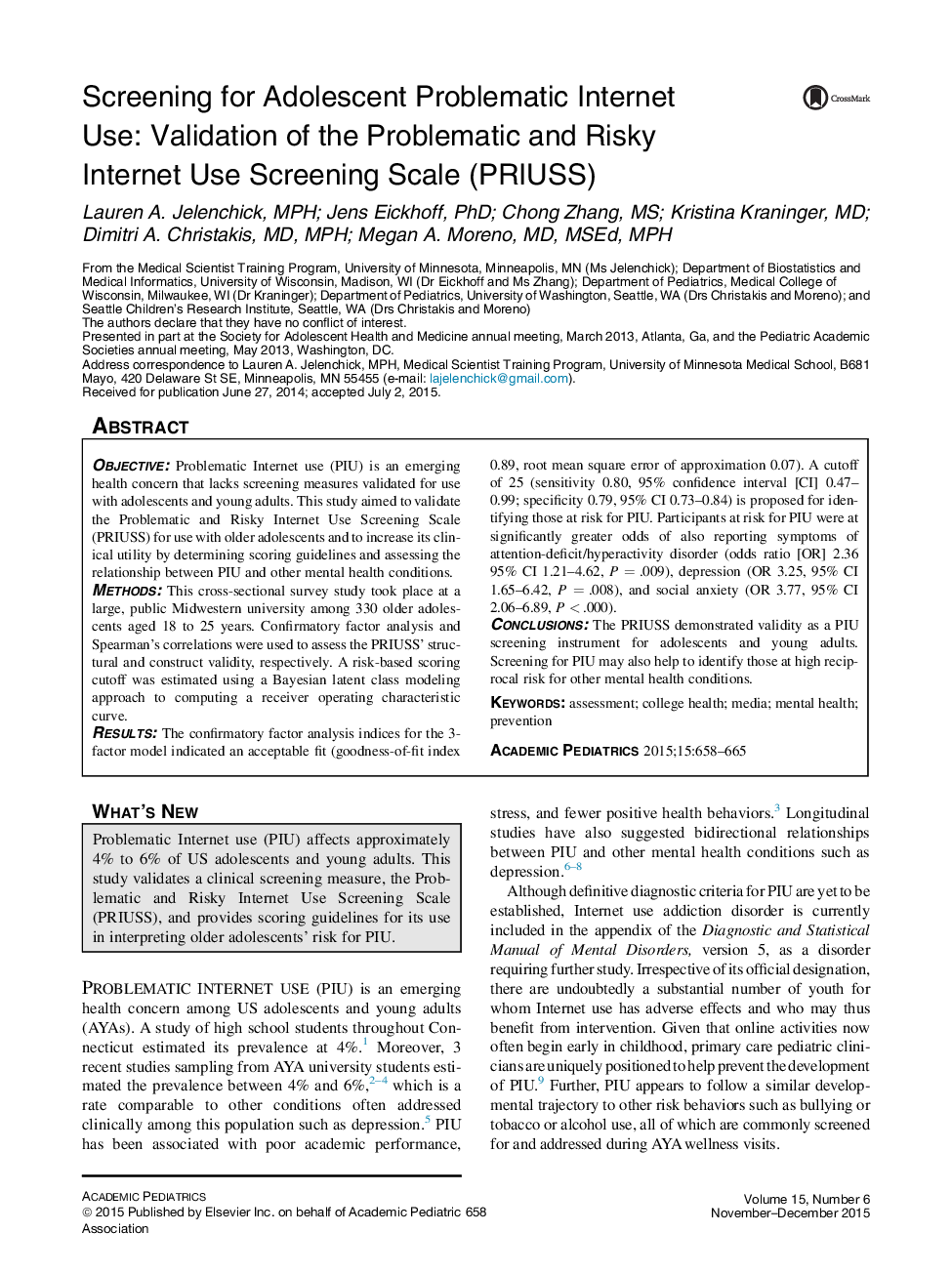| Article ID | Journal | Published Year | Pages | File Type |
|---|---|---|---|---|
| 4139007 | Academic Pediatrics | 2015 | 8 Pages |
ObjectiveProblematic Internet use (PIU) is an emerging health concern that lacks screening measures validated for use with adolescents and young adults. This study aimed to validate the Problematic and Risky Internet Use Screening Scale (PRIUSS) for use with older adolescents and to increase its clinical utility by determining scoring guidelines and assessing the relationship between PIU and other mental health conditions.MethodsThis cross-sectional survey study took place at a large, public Midwestern university among 330 older adolescents aged 18 to 25 years. Confirmatory factor analysis and Spearman's correlations were used to assess the PRIUSS' structural and construct validity, respectively. A risk-based scoring cutoff was estimated using a Bayesian latent class modeling approach to computing a receiver operating characteristic curve.ResultsThe confirmatory factor analysis indices for the 3-factor model indicated an acceptable fit (goodness-of-fit index 0.89, root mean square error of approximation 0.07). A cutoff of 25 (sensitivity 0.80, 95% confidence interval [CI] 0.47–0.99; specificity 0.79, 95% CI 0.73–0.84) is proposed for identifying those at risk for PIU. Participants at risk for PIU were at significantly greater odds of also reporting symptoms of attention-deficit/hyperactivity disorder (odds ratio [OR] 2.36 95% CI 1.21–4.62, P = .009), depression (OR 3.25, 95% CI 1.65–6.42, P = .008), and social anxiety (OR 3.77, 95% CI 2.06–6.89, P < .000).ConclusionsThe PRIUSS demonstrated validity as a PIU screening instrument for adolescents and young adults. Screening for PIU may also help to identify those at high reciprocal risk for other mental health conditions.
